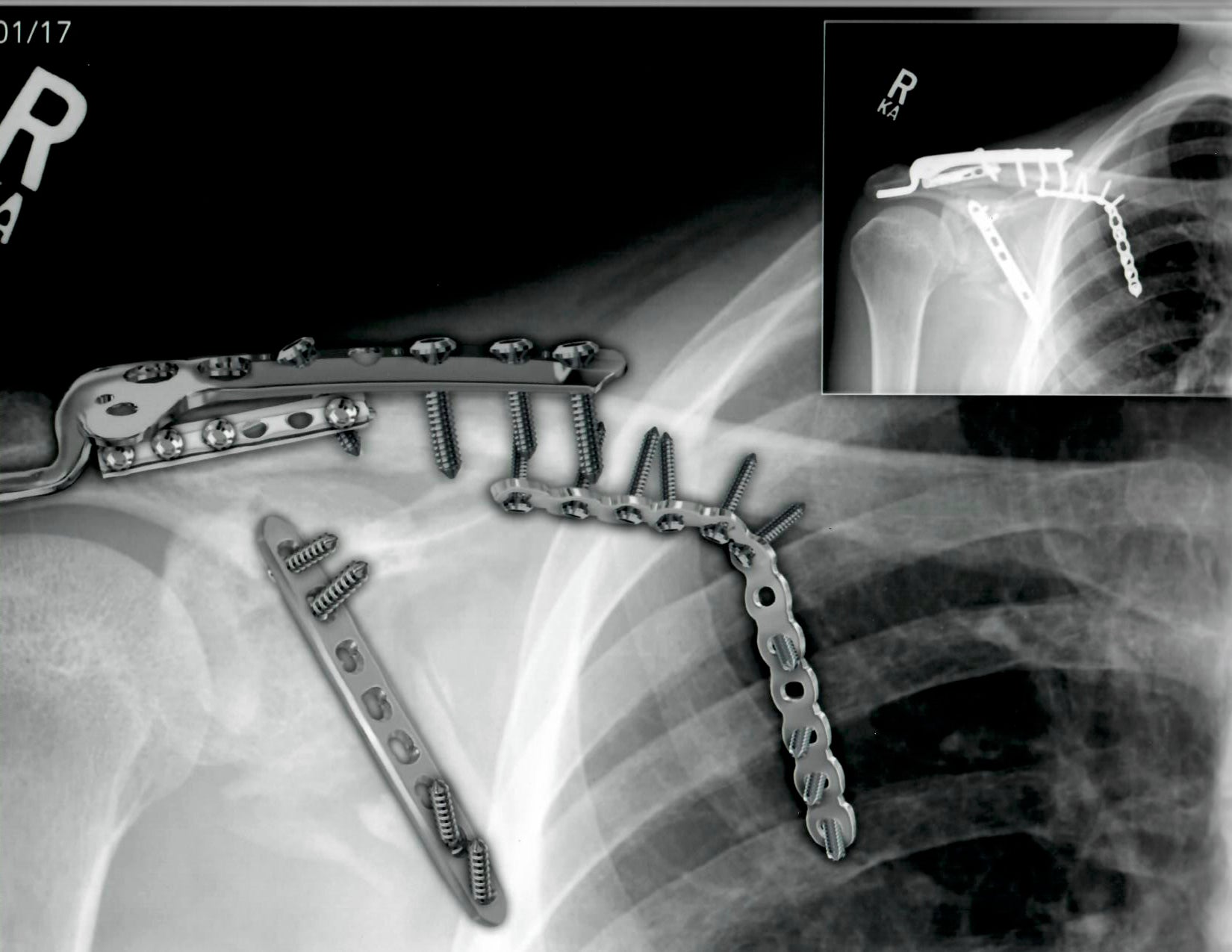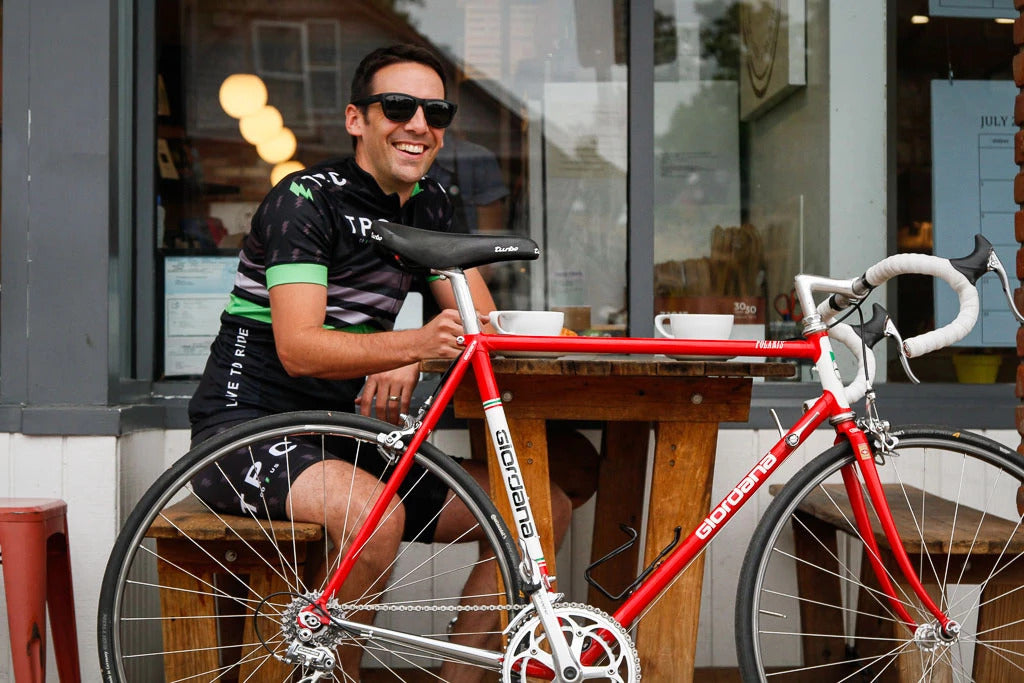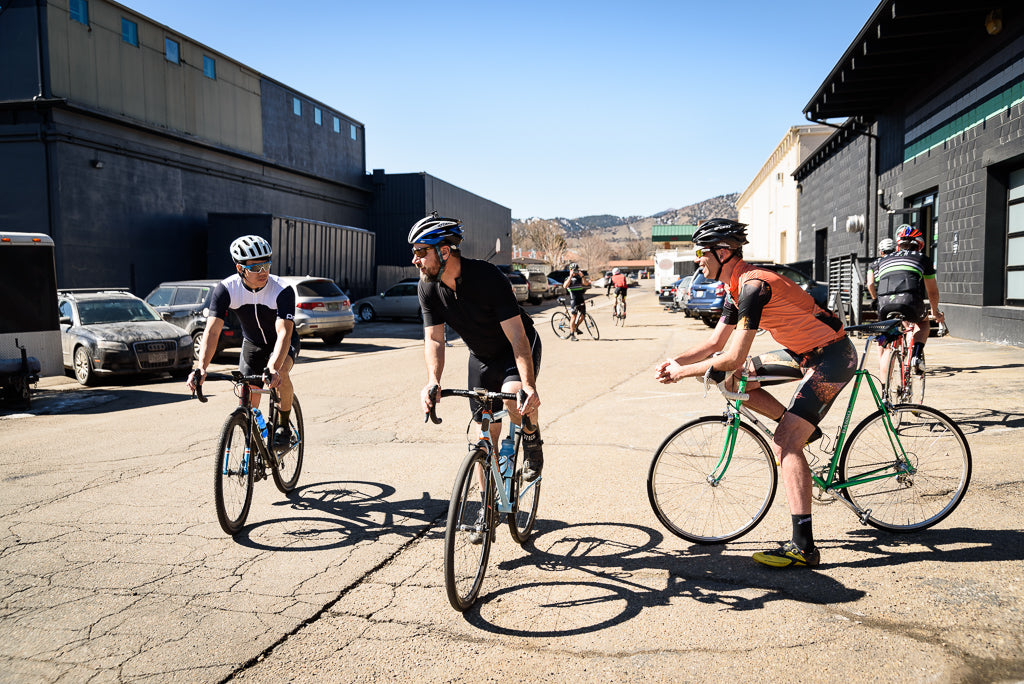 Crashing is rough. | Bartek Wolinski/Red Bull Content Pool
Crashing is rough. | Bartek Wolinski/Red Bull Content Pool
For bike riders, it’s not a matter of if you’ll crash, but when. If you’re unlucky, a bad crash can cause injury or trauma that will derail your cycling ambitions. Last year, I had a major crash on a large jump, damaging ligaments in my right ankle and knee. I spent several weeks on crutches, unable to ride or even pedal on a trainer. Over a year later, I still felt the lingering effects of these injuries.
Even worse than the physical pain though, is how my crash affected me mentally. I felt dejected because I couldn’t ride. I was depressed about the weight I gained, and the endurance and power I lost. When I got back on the bike I discovered that my confidence was wounded too. I was more hesitant and fearful, avoiding things on my bike that I once found easy. I experienced huge amounts of self-doubt and even thought about just quitting the sport.
Of course, we’re all extremely blessed to have the opportunity to ride bikes for fun. But when you love cycling and dedicate yourself to the sport, a setback caused by a crash or injury can be difficult to deal with.
The Pro’s Closet is full of riders who push their limits on the bike daily. Not surprisingly, plenty have experienced bad crashes and injuries. But all of us, fortunately, have been able to come back stronger and smarter.
I took some time to talk with several of our riders about their experiences to see what wisdom they could impart.
 TPC employee and Pro/Cat 1 racer Ricky got hit by a car. This colorized X-ray shows the severity of the damage to his shoulder. It took a full year to get back to normal but he's fully recovered. This season has been one of his most successful.
TPC employee and Pro/Cat 1 racer Ricky got hit by a car. This colorized X-ray shows the severity of the damage to his shoulder. It took a full year to get back to normal but he's fully recovered. This season has been one of his most successful.
If you’ve experienced a bad crash or injury, or any sort of physical or mental setback to your riding, this is our advice on how to recover properly and come back strong.
Practice Patience
Being patient is the most common piece of advice I received from everyone I talked to. It’s obvious. But for many riders, including myself, it’s the hardest advice to follow.
 Justin is a former pro cyclist who's crashed plenty of times. He's a master at taking it easy and not rushing recovery.
Justin is a former pro cyclist who's crashed plenty of times. He's a master at taking it easy and not rushing recovery.
Too often, riders who are itching to get back in the saddle will try to accelerate their return to form. Unfortunately, this often leads to re-injury and increased recovery time. Patience doesn’t just mean sitting around and waiting. If you are able to ride, patience can mean just accepting that you can’t perform at the level you did previously until you are fully healed. It can mean sticking to easy rides and not pushing yourself too early.
Axel is a Cat. 1 road racer who’s come back from several broken bones. As a highly competitive racer, he understands the impulse to try and get back to your previous level as fast as possible, but he cautions against it.
“Don't look at your Garmin, your power meter, or your speedometer for at least a month,” he says. “Don't try to get it all back in one ride. That’s not how it works. All you can do is all you can do. You have to accept that and take it slow. Don’t force it. Everything comes back with time.”
Last year, I got impatient and tried to ride my mountain bike on a technical trail before my injuries had fully healed. I wanted to prove to myself that I could still ride at a high level. Of course, I was not physically or mentally ready. I rode slow and terrified. Then I had a moment where I had to unclip from my pedal unexpectedly and that was all it took to re-injure my ankle and add another month to my recovery.
If I had just waited another couple weeks, my ankle might have been significantly stronger. If I had started out on an easier trail, I probably wouldn’t have needed to dab my foot. I needed more time to rebuild both my body and my riding ability. But my impatience to return faster took over and I ended up making things worse.
Justin says, “Don't rush to get back out on the road or trail.” He’s a former professional road racer. During his career, he’s had to come back from bad injuries and surgeries in the middle of his race season. Because riding was his livelihood, he understood the importance of patience and took it seriously.
“I've had plenty of friends push it to come back sooner and have a setback increase their total recovery time,” he says. "Rather than pushing it on the bike, your focus should be on getting fully healed and building yourself back up slowly. Your mind will be ready before your body. Make sure you listen closely to what your body tells you.”
Patience is hard to embrace when you are jonesing to ride or if you feel like you’re losing out on training. I found being patient after my crash was hard because I felt like my riding partners would all leave me behind. But the more experienced riders I spoke to all emphasized that you need to look at the bigger picture. Nothing in cycling improves in the short term. Fast and skilled riders exist despite injury because of years and years of consistent riding. You have to remember that you will still have lots of time to ride once you're healed.
 Phil (center) and I (left) stuck together for easy recovery rides when we were hurt.
Phil (center) and I (left) stuck together for easy recovery rides when we were hurt.
My colleague Phil broke his index finger last year, requiring two pins. Though it seems minor, it affected his riding seriously because he couldn't use the brakes. He advised me to not worry so much about losing anything in the short term, as long as I could gain it back in the long term as a healthier rider.
“Trust that there will be another day when you will return and perform like you once did,” Phil says. He patiently waited for months until the full range of motion and strength in his finger returned. After fully recovering, he worked on his fitness again and eventually achieved a new PR on the same route where he'd injured his finger.
Redirect your Focus
Many riders struggle with injury because they are hungry to keep improving their fitness and skills. Time off the bike was one of the most painful things I went through during my recovery. If you're like me, you can help yourself through the layoff by shifting your energy toward other aspects of recovery.
What this means is treating your recovery like you treat training. Focus on rehab. Be strict, be thorough, and track it. Fitness isn’t only about being able to pedal hard. If you can't ride, work on other aspects of your mind and body. This has the added benefit of helping you be more patient about your recovery since you can remain active and work at improving other things.
Steve is a mountain biking addict who suffered a collapsed lung, broken clavicle, and two dislocated shoulders. Being sidelined was a struggle. But even though he was severely hurt, he decided he wasn’t going to sit around and let himself waste away.
“While it is important to rest after an injury or surgery, it is shocking how fast fitness disappears,” he says. “Muscles begin to waste away after a couple of days of inactivity so I made it a point to regularly get off the couch and keep the blood flowing, even if that meant just walking around the block.” Walking regularly was just the beginning of his return to peak fitness.
“I started going to the gym and made baby steps with exercises approved by my doc,” Steve says. “I tracked my progress to stay motivated. This grew into a bigger routine that supported my physical therapy, then continued and expanded into a gym routine to get stronger and prevent future injury in the long run once my rehab was done.”
 Steve (right) was badly injured after his crash, but after focusing his energy on rehab and recovery he's come back strong.
Steve (right) was badly injured after his crash, but after focusing his energy on rehab and recovery he's come back strong.
This focused approach to rehab and gym work helped Steve come back to riding with a new level of fitness. He's developed more muscle and upper-body strength, which will protect his shoulders in future crashes. It also has the added benefit of helping him handle his bike better in rough terrain.
“Do yoga, core work, and foundation training,” Axel says.
Similar to Steve’s gym routine, Axel used his time off the bike to work on his flexibility and core strength, which has improved his posture and relieved back pain. Improving those aspects of his body while injured has made him a better rider overall.
Phil chose to focus on his diet when he couldn’t ride. “I tried to consume less beer and food,” he says. “I used it as an opportunity to really focus on my diet and lose weight. I started tracking calories since I wouldn't be exercising as much and took up intermittent fasting as well.” Phil found becoming more mindful of his diet helped him become healthier, which in turn help him recover faster. He came back slim and fit and he’s been riding faster ever since.
After re-injuring my ankle, I started taking my own recovery more seriously. I decided to lose extra weight and like Phil, I followed a focused diet. It was surprisingly easy to do since I was off the bike and my calorie needs were much lower. I used an app to track my calories, which kept me on track and motivated. When I saw positive results I felt happy even though I was still limping around.
I joined Steve in the gym and developed a consistent routine that focused on small movements with resistance bands to strengthen my ankle and return the range of motion I had lost due to ligament damage. I also discovered that my core and shoulders were surprisingly weak. I incorporated more core strength work into my routine.
My ankle and knee aren’t ever going to be as good as they once were. But I’ve improved my body as a whole and feel I’ve become a more complete rider.
Find Support
“Stay positive!” Maggie says. “Positive mental attitude goes a long way, so I often told myself, ‘Hey, this was just a couple body parts that will heal. It could have been worse.’ It helped that, everyone [at The Pro’s Closet] seemed to have a worse crash story than me, so I got some good perspective in that way.”
Maggie broke her wrist, a few ribs, and suffered a concussion while riding jumps on her mountain bike. She was cleared by her doctor to ride gently after three months but was told to wait six months before riding outside at her previous level of intensity. That is a long time to wait.
“I think my recovery was more mental than physical,” she says. To get her through the months off the bike, Maggie turned to friends and fellow riders to help stay sane and then ease her back into the sport.
“Reach out to your network,” she says. “Let them know that you need extra help staying positive and getting out to do things! I did that so I wouldn't get too bummed all winter while I couldn't bike and they did an awesome job getting me out and about.”
 Maggie (center) turned to friends for support after her crash.
Maggie (center) turned to friends for support after her crash.
Having support from people who understand your struggle is one of the most powerful things you can turn to after a crash or injury. Not everyone has a network of riding friends. But it’s the 21st century and the Internet has an amazing ability to connect people. Cycling sites and forums are filled with others who are open and willing to share their experiences and provide support and advice. I’ve even found a lot of benefit from a specialized sports therapist who understands the mental turmoil happening inside me.
I’m the type of person who never thought I would need therapy or support. But it helped bring me out of some dark places and back into the light. One of the worst things you can do is shut yourself off from the people and tools that can help. Just commiserating with friends about my injury and seeking their advice did a lot to help me gain perspective, stay positive, and look forward to the future.
Set New Goals
“I signed up for an enduro race when I was still out,” Maggie says. “That gave me motivation.”
It doesn’t have to be an event or race, but setting specific short and long term goals can give your recovery a sense of purpose. The goal of racing an enduro made it easier for Maggie to ease back into riding and focus on recovering properly.
Your goal could be something small and simple. In his time off the bike, Steve combed through satellite images on Google Maps, looking for hidden trails in the backcountry. His goal was to explore them once he was healthy. Perhaps you just want to be able to rejoin your weekly group ride, or finish a difficult ride or climb without stopping, or get redemption by conquering the obstacle that hurt you in the first place.
My goal was to hit the jump that I had crashed on. Setting achievable goals is instrumental in helping you be patient, focus on recovery, and get back on the bike.
Conquer Your Fears
Over the last year, I’ve been able to get back into regular riding and my fitness has slowly returned. Now, I hardly remember being hurt at all. Time really does change everything. My confidence, however, took longer to come back.
Several times I rode toward the jump I crashed on and then slammed on the brakes. I was terrified of what might happen and didn’t want to get hurt again. But I still wanted to do it, and prove to myself that I could. To achieve my goal, I had to apply the advice my co-workers gave me.
I had to be patient and recognize that it would likely take a long time to jump with the same confidence I had before. So I waited until I was fully healed. Then I went slow and started over at the beginning, practicing on the smallest, easiest jumps at the bike park. I made sure my form was perfect and progressed to bigger jumps methodically.
While I was off the bike I strengthened my ankles, shoulders, and core (I was so weak before!) to absorb the sort of harsh impact that threw me off my bike the first time. I watched videos, studied technique, and practiced visualization to prepare myself.
I rode with my core group of friends who not only encouraged me to go for it, but also supported me each time I bailed and hit the brakes.
Then one day, over a year after my crash, I did it. I overshot the landing, which was the same thing I did when I crashed. But this time I was stronger and prepared for it, so I managed to stay upright. Then I went and did the jump again, only better. It might not seem like much to some, but I was overjoyed. I felt like I was finally back.
Hopefully, you can keep the rubber side down for as long as possible. But if you do crash and get hurt, don’t lose hope. The struggle to get back on your bike is a process many of us have gone through. It's something you can succeed at. As long as you get back on the bike, it’s always worth it.
Have you experienced a bad crash or injury that affected your riding? How did you come back from it? Let us know in the comments!

